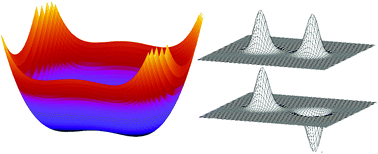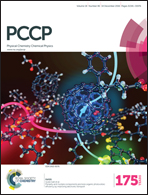Pushing the limit for the grid-based treatment of Schrödinger's equation: a sparse Numerov approach for one, two and three dimensional quantum problems†
Abstract
The general Numerov method employed to numerically solve ordinary differential equations of second order was adapted with a special focus on solving Schrödinger's equation. By formulating a hierarchy of novel stencil expressions for the numerical treatment of the Laplace operator in one, two and three dimensions the method could not only be simplified over the standard Numerov scheme. The improved framework enables the natural use of matrix sparsity to reduce the memory demand and the associated computing time, thus enabling the application of the method to larger problems. The performance of the adapted method is demonstrated using exemplary harmonic and Morse problems in one and two dimensions. Furthermore, the vibrational frequencies of molecular hydrogen and water are calculated, inherently considering the influence of anharmonicity, mode–mode coupling and nuclear quantum effects. The estimation of the tunneling splitting in malonaldehyde serves as an example for a two-dimensional problem.



 Please wait while we load your content...
Please wait while we load your content...